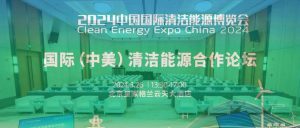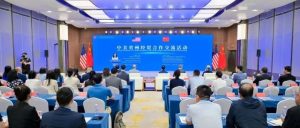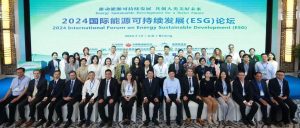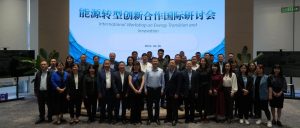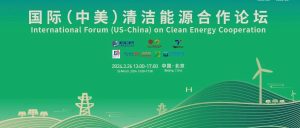7月8日,国际能源署《全球天然气分析及展望2021-2024》报告在京发布。
此次发布会由国际能源署(IEA)、北京大学能源研究院 (IEPKU)、中美能源合作项目 (ECP)、上海石油天然气交易中心(SHPGX)联合主办,来自国际能源署、国家能源局、美国驻华大使馆、英国和法国等部分国家驻华使领馆及中外能源企业、研究机构代表共计100余人莅临现场,北京巴黎同步线上中英文频道观看直播流量累计五万人次。

会议由IEA署长高级顾问安丰全先生主持。国家能源局油气司王晶副司长和IEA天然气、煤炭和电力市场部门负责人Peter Fraser先生为会议开场做了引领性致辞,充分肯定了在全球能源转向低碳、零碳发展的背景下,到2024年天然气将发挥重要作用,全球天然气需求将保持低速稳步增长,天然气低碳创新发展将仍有望迎来发展机遇。
国家能源局油气司王晶副司长指出中国能源界关于如何实现双碳目标虽然一直有些争论,但中国要实现双碳的目标,首先要加快能源生产和消费的革命,这是实现碳达峰和碳减排重要的措施和推动力量,在全球碳减排进程中无论是低碳的天然气替代高碳能源,还是构建储能气电等灵活性调节电源,天然气都将在全球和中国能源绿色低碳转型中发挥重要的作用,未来中国将继续坚持天然气产共储销的协同发力,大力提升勘探开发力度,加快完善基础设施的布局,加快储气设施的建设,推动市场化改革,努力构建安全可靠有弹性、有韧性的天然气产业链、供应链的体系,同时优化天然气利用结构,加快气电协同融合发展,提高天然气的应急保供能力等方方面面,采取更有力的措施,提高整个天然气的弹性和韧性,从而应对更大的机遇和挑战,不断促进行业高质量的发展。
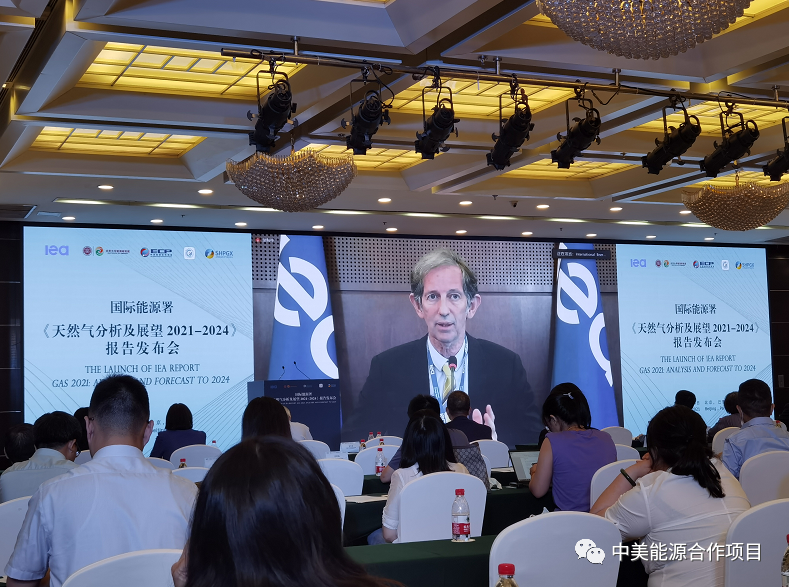
国际能源署两位天然气专家Jean-BaptisteDubreuil先生和Akos Losz先生对报告做了深度分析和解读。报告中指出到2024年,全球天然气需求有望增长至4.3万亿立方米,较2020年增加3500亿立方米。中国等亚洲新兴经济体是未来全球天然气需求增长的主要动力。
国际能源署的主题报告之后,来自中国的研究和国内外知名行业专家就天然气在未来中国和全球碳中和中的作用与见解做了专题报告分享和讨论对话。
北京大学能源研究院副院长杨雷表示,大力推进“煤改气”是我国改善大气环境质量、减少温室气体排放、实现绿色低碳发展的有效途径。鼓励天然气与可再生能源融合发展,可以实现优势互补,共同推动清洁低碳、安全高效的能源供应体系建设。
生态环境部国家应对气候变化战略研究和国际合作中心战略规划部主任柴麒敏表示,未来15年,我国天然气行业仍有可能具备较好的发展前景,尤其是在化工和发电领域。
来自天然气行业的知名能源企业对话嘉宾也分享了他们在促进碳中和以及能源转型过程中的一些创新做法和积极措施。
切尼尔能源液化天然气战略与沟通副总裁AndrewWalker先生分享其公司在全球应对气候变化中实现碳中和目标中所做的努力和创新尝试,今年四月切尼尔就将标有碳中和标签的美国LNG供应到了欧洲市场。沃克先生特别分享了其在船货碳排放标签(CE) 标签和生命周期(LCA)模型计算LNG价值链上每个环节包括从井口到交付地的温室气体排放数据的经验。
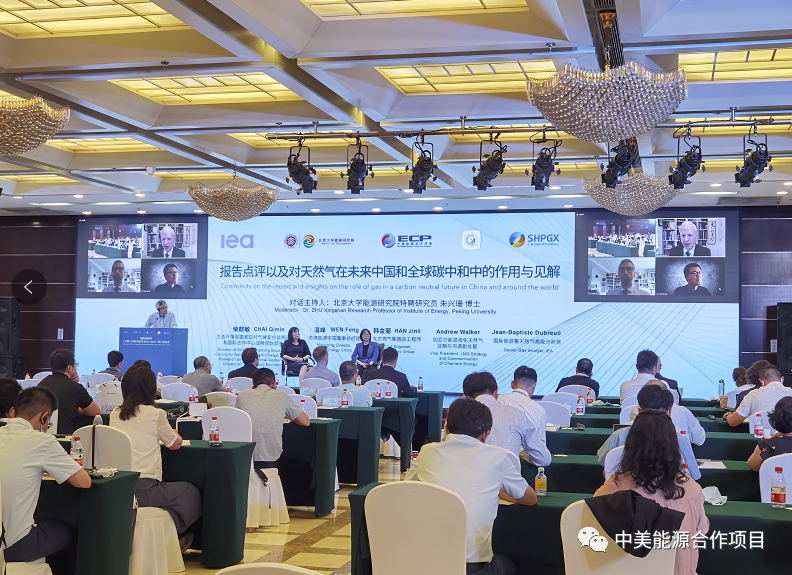
壳牌能源中国董事总经理温峰女士除了分享其全球持续加大天然气投资的战略方向外,还分享了壳牌在碳捕捉利用和储存,以及氢能领域的一些全球新动向和经验。
北京燃气的总工程师韩金丽女士也分享了北京燃气集团除了继续保持关注能源安全和能源数字化以外,由于甲烷是一个比二氧化碳、温室效应还要高的温室气体,韩总工特意提到了北燃将甲烷温室气体的排放作为集团重点关注之一,从而希望甲烷不再是天然气低碳发展的绊脚石。
北京大学能源研究院的特聘研究员朱兴珊博士也补充总结,提出天然气在低碳中的作用毋庸置疑,天然气是可再生能源的伙伴,以新能源为主体的现代清洁能源体系的支撑,远期来看要看天然气,一个是天然气加CCS的竞争力怎么样,一个是零碳制氢。朱博士还提出到2024年中国的液化能力没有问题,但是后来可能就有一点问题,需要买方提前作出决策。朱博士建议买方决策者可能要从长计议,尽量启动一些长期合同的谈判。
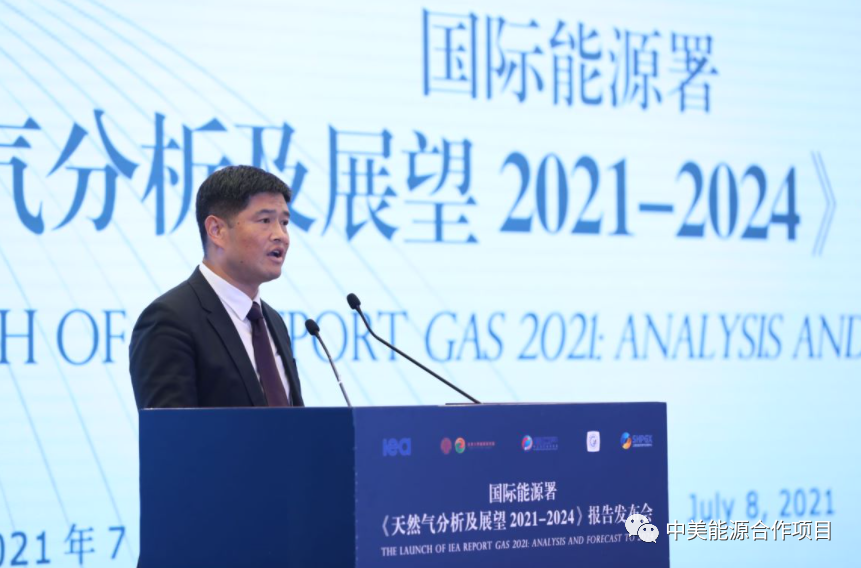
ECP董事会联席主席、康菲石油中国业务发展和政府事务副总裁杨玉民先生在总结时指出,天然气将继续在世界能源和中国能源结构中发挥重要的作用。ECP和ECP成员中的天然气生产和贸易公司都很愿意继续为中国能源市场做出贡献,从美国市场和全球其他市场为全球天然气市场提供稳定和可负担的能源,并支持我们的中国合作伙伴和客户早日实现国家的碳中和目标。
此次活动是ECP与国际能源署和北京大学能源研究院联合合作,在成功组织了国际能源署《全球石油市场报告2021》发布会和《全球能源行业2050净零排放路线图》发布会后的国际能源合作(iECP)系列活动的第三个活动。ECP将继续为国际能源领域所有相关利益相关方提供一个有效的创新合作平台。ECP已开始安排今年下半年一系列省际考察调研和碳捕捉利用和储存、储能安全标准、氢能等专题行业论坛,如有兴趣欢迎联系垂询。
IEA
Report Gas 2021: Analysis and Forecast to 2024 was released in Beijing
IEA
Report Gas 2021: Analysis and Forecast to 2024 was released in Beijing
on July 8th.
This
conference was jointly hosted by the International Energy Agency (IEA), the
Institute of Energy of Peking University (IEPKU), the Energy Cooperation
Program (ECP), and the Shanghai Petroleum and Natural Gas Exchange (SHPGX). More
than 100 guests from the IEA, the National Energy Administration (NEA), the
U.S. Embassy in China, some embassies and consulates in China such as the U.K.
and France, as well as Chinese and foreign energy companies and research
institutions attended.The accumulated number of online participants is 50,000 within two-hour global simultaneous conference.
The meeting was moderated by An Fengquan, Senior advisor,
IEA.
Wang Jing, Deputy Director of the Oil and Natural Gas Division
of the National Energy Administration, and Peter Fraser, Head of Gas, Coal and
Power Markets Division, opened the meeting with leading remarks. They affirmed
that natural gas would play an essential role by 2024 in the context of a
global energy shift to low carbon and zero-carbon development.
Global natural gas demand will maintain a low speed and
steady growth. The low-carbon innovation and development of natural gas will
still be expected to usher in development opportunities.
Wang Jing, Deputy Director of the Oil and Natural Gas Division
of the National Energy Administration, pointed out that although there are
still some debates on how to achieve the double carbon target, China to achieve
the double carbon target, the first step is clear-that is-to speed up the
revolution in energy production and consumption. This is an important measure
and driving force to achieve carbon peak and carbon emission reduction. In the
process of global carbon emission reduction, natural gas has a crucial part to
play in the green and low-carbon energy transformation of the world and China,
whether it is the substitution of low-carbon natural gas for high-carbon energy
or the construction of energy storage gas electricity and other flexible
regulation power supply. In the future, China will continue to adhere to the
coordinated development of natural gas production, storage and marketing,
vigorously enhance exploration and development efforts, accelerate
infrastructure layout, speed up the construction of gas storage facilities, and
promote market-oriented reform. Besides this, China will strive to build a
safe, reliable, flexible and resilient natural gas industry and supply chain
system. At the same time, the utilization structure of natural gas will be
optimized. The coordinated and integrated development of gas and electricity will
be accelerated. The emergency protection and supply capacity of natural gas will
be improved. More powerful measures will be taken to improve the elasticity and
toughness of the whole natural gas, so as to cope with greater opportunities
and challenges, continuously promoting the high-quality development of the
industry.
Jean-Baptiste Dubreuil and Akos Losz, two natural gas
experts from the IEA, have analyzed and interpreted the report. The report has
pointed out that global gas demand is expected to grow to 4.3 trillion cubic
meters by 2024, increasing to 350 billion cubic meters from 2020. Emerging
Asian economies such as China are the main drivers of future growth in global
gas demand.
Following the IEA keynote report, Chinese researchers and
well-known industry experts shared their insights on the role of natural gas in
the future of carbon neutrality in China and globally.
Yang Lei, deputy director of the IEPKU, said that
replacing coal with gas was an effective way for China to improve air quality,
reduce greenhouse gas emissions and achieve green and low-carbon development. Encouraging
the integrated development of natural gas and renewable energy can complement
each other’s strengths and jointly promote a clean, low-carbon, safe and
efficient energy supply system.
Chai Qimin, Director for Strategy and Planning, National
Center for Climate Change Strategy and International Cooperation (NCSC) in the Ministry
of Ecological Environment, argued that in the next 15 years, China’s natural
gas industry was still likely to have a good development prospect, especially
in the chemical industry and power generation.
Speakers from well-known energy companies in the natural
gas industry also shared some of their innovations and initiatives in promoting
carbon neutrality and the energy transition.
Andrew Walker, the Vice President for Strategy and
Communication for Cheniere, shared his companies’ efforts and innovations in
achieving carbon neutrality in the global response to climate change. Chenier
supplied carbon-neutral US LNG to the European market in April. In particular,
Mr. Walker shared his experience with Cargo Emissions Tag (C.E.) and Life Cycle
Assessment (LCA) models to calculate GHG emissions data for each link in the
LNG value chain, from the wellhead to the delivery site.
Wen Feng, Director & GM, Shell Energy (China), in
addition to her strategic direction of increasing global investment in natural
gas, also shared some of Shell’s new trends and experience in the field of
carbon capture, utilization and storage and hydrogen energy.
Han Jinli, Chief engineer of Beijing Gas
Han Jinli, the chief engineer of Beijing Gas, also shared
that in addition to continuing to pay attention to energy security and energy
digitization, because methane is better energy than carbon dioxide, and the greenhouse
gas effect is even higher, Beijing Gas Group will create methane greenhouse gas
emissions as one of the key concerns of the group, so as to hope that methane
is no longer a stumbling block to the low carbon development of natural gas.
Dr Zhu Xingshan, Distinguished Research Fellow in IEPKU, added
that the role of natural gas in low carbon was beyond doubt. Natural gas is
renewable energy and supports the modern, clean energy system with new energy
as the main body. In the long term, it depends on natural gas. One is how
competitive is natural gas plus CCS, and the other is zero-carbon hydrogen
production. Dr. Zhu also suggested that there was no problem with China’s
liquefied capacity by 2024, but later there might be a problem requiring the buyer
to decide in advance. Therefore, Dr. Zhu further suggested that decision-makers
on the buyer side might want to take a long-term view and start negotiations on
long-term contracts.
Yang Yunming, Co-Chair of the ECP Board of Directors, and
Vice President, Commercial & Government Affairs of ConocoPhillips China
Inc., concluded by pointing out that natural gas will continue to play an
important role in the world energy and China’s energy structure. ECP and the
natural gas production and trading companies in the ECP membership are pleased
to continue to contribute to the Chinese energy market, providing stable and
affordable energy to the global natural gas market from the U.S. market and
other markets around the world, and supporting our Chinese partners and
customers in achieving the country’s carbon-neutral goals early on.
This conference is a collaboration between ECP, the IEA and
IEPKU. This is the third event in the International Energy Cooperation Program
(iECP) series after the launches of IEA Oil Market Report 2021 and Net Zero by
2050: A Roadmap for the Global Energy Sector. ECP will continue to provide an
effective platform of innovation cooperation for all relevant stakeholders in
the international energy sector. ECP has started to arrange a series of
provincial investigations and industry forums on carbon capture, utilization
and storage, energy storage safety standards, hydrogen energy and other topics
in the second half of this year. If you are interested, please get in touch
with us.


